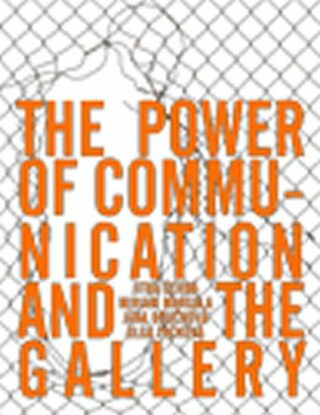4.8 z 5 hvězdiček
měkká vazbaKniha ( měkká vazba )
- Produkt je nedostupný.
Art is communication. It makes thought visible to us. It slows us down. It makes us pause, look, consider, and ask questions. It requires us to be active participants in the reading of the work, asking questions about ourselves, the nature of what it is we’re looking at, and the nature of its relationship to us. It’s informed by real… Přejít na celý popis
 Florence Dayová, stínová spisovatelka, ztratila víru v lásku po zdrcujícím rozchodu. Když se jí začne zjevovat duch jejího sexy, ale přísného redaktora Benjiho, začnou mezi nimi přeskakovat jiskry...
Více informací
Florence Dayová, stínová spisovatelka, ztratila víru v lásku po zdrcujícím rozchodu. Když se jí začne zjevovat duch jejího sexy, ale přísného redaktora Benjiho, začnou mezi nimi přeskakovat jiskry...
Více informací
K tomuto produktu zákazníci kupují
-

-

-

-

-
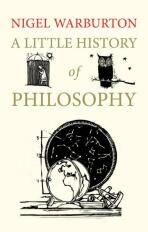
-

-
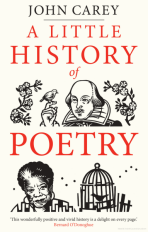
-

0.0 z 5 hvězdiček
pevná vazba -

-

-
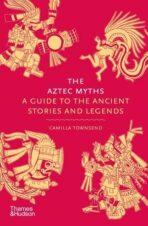
-

-

-

-
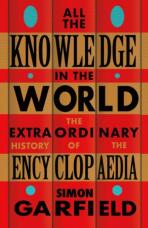
-

-

-

-
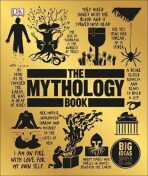
-
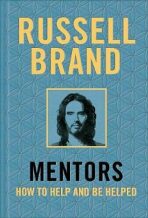
-

-

-

-
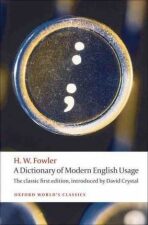
Art is communication. It makes thought visible to us. It slows us down. It makes us pause, look, consider, and ask questions. It requires us to be active participants in the reading of the work, asking questions about ourselves, the nature of what it is we’re looking at, and the nature of its relationship to us.
It’s informed by real experience and a connectedness to the world, and an ability to bring significance to the particular and the moment. As the critic John Berger observed, “a drawing of a tree shows not a tree, but a tree being-looked-at”. Art has never been interested in imitation of the already known, but aspires to operate in the space between the individual and the perceived reality. It is where, one could argue, the artist’s content is found. Pre-dating written communication, the visual language of the artist has proven itself inexhaustible over the centuries with its ability to continuously reinvent itself. As each new idea is filtered through the unique sensibilities of the individual, the artist acts as a conduit for a dialogue between sight and touch, logic and intuition, substance and phenomena.
Taking risks and reveling in the unknown, art doesn’t come into existence easily and the creative process for the artist is rarely linear. Artists like making things but it’s not a practical endeavor as nothing could be less utilitarian. But it is necessary for the artist and historically, the best work usually reflects this urgency.
The gallery plays a valuable role in our relationship with art. It gives us a chance to exist in the same shared space as the work and gain access to it, measuring it against ourselves and providing the type of physical relationship necessary for us to understand the work beyond the mere superficialities of appearance. Just as important, it allows us to understand and appreciate the skill, intelligence, and work necessary for an idea to become a reality, vicariously giving us insight into the creative endeavor.
For the artist, gallery exposure has always been important.
Exhibiting in a gallery allows the artist to put their art out in the world without apology, and also, without guarantees. Removed from the studio, it tests the work. It is often the first time individual pieces are seen simultaneously as a group by the artist, and the first chance to see if the body of work can be understood as a cogent and cohesive whole.
Almost always the culmination of a sustained period of work in the studio, unfairly or not, the response to the artist’s work in a gallery is often looked at as a measure of its worth. It’s not easy nor is it always accurate but it’s understood as a necessary aspect of the business of being an artist.
“Seeing is not as easy as it looks”, the artist Ad Reinhardt once quipped, and one could easily argue that much of the public’s judgment or even indifference to art is often a reflection of their inability to see and understand artwork on its own terms. For better or worse, seeing is a learned activity and taste aside, the general public seldom brings the background or experience necessary to move beyond the superficial qualities of a work of art, especially contemporary work. Often, they are only able to see what a piece of art looks like, but not necessarily what it is. Acting as a bridge between the artist and the public, the gallery typically provides the first articulation of the work a visitor encounters when seeing an exhibition, introducing an important educational dynamic to the gallery and advocacy for the artist.
In this book, the authors examine the complex relationship and history of the artist, the gallery, and the collector, and the difficult task of understanding the confluence of forces that deliver the work of the artist to the marketplace, and for better or worse, the complicated matter of how content of art is translated into commodity. Like most things, it’s always about economics and the arts are no exception. Although it may be not why the vast majority of artists make art, but as objects that are valued, it’s perhaps unavoidable that money has always been intrinsic to our concept of it. This has never been truer than today, or more problematic. From businessman, entrepreneur, and manufacturer of culture, over the centuries, many artists have understood the need to organize and manage their career, seeking out opportunities for patronage and support in order to have their work recognized. Today though, this relationship between art and money is at a precarious crossroads as the distinction between aesthetic value and monetary worth has been blurred - nowhere more evident than the escalating prices of recent auctions.
Still, for many artists, the artist-gallery working relationship remains the most effectual means for bringing their work to the public for critical consideration.
The gallery contextualizes the artist’s ideas, initiating communication and allowing the work to be understood as part of a larger discourse. In addition to traditional commercial gallery spaces, there are educational institutions, non-profit alternative spaces, and artist co-ops, each playing considerable and equally important roles of bringing the work and ideas of the artist into the world for the larger public.
With mass culture being rapidly driven and formed through the prevailing means of electronic communication, the slower corporeal and analytical connection necessary to understand substantial and complex artwork is not accordant with the widespread cultural sensibility of easy diversions and fast fulfillment. Neither is it understood as a necessity by many, as art doesn’t have the material usefulness that other common goods possess. Still, there appears to be no slowing down to the arts or its relevance. Compelling, honest, and reflective of who we are, it stubbornly occupies a unique place in our culture, and a significant portion of the public still understands the aesthetic experience of art as indispensable. Inevitably, it seems that the desire to experience art remains as strong as the need of individuals to continue to make it and in that regard, the role of the gallery will continue to be critical to the arts.
Stephen Misho
- Nakladatel
- Ekopress
- Rozměr
- 210 x 270 x 20
- datum vydání
- 1.03.2018
- ean
- 9788087865415
- Počet stran
- 313
- Hmotnost
- 1000 g
- jazyk
- angličtina
- Vazba
- měkká vazba
- Vydání
- 1
- isbn
- 978-80-87865-41-5
Hodnocení a recenze čtenářů Nápověda
0.0 z 5 0 hodnocení čtenářů
0× 5 hvězdiček 0× 4 hvězdičky 0× 3 hvězdičky 0× 2 hvězdičky 0× 1 hvezdička
Přidejte své hodnocení knihy
Vývoj ceny Nápověda
Získejte přehled o vývoji ceny za posledních 60 dní.
Články, které stojí za pozornost
-

-

-

-

-

-

-

-

-

-

-

-


